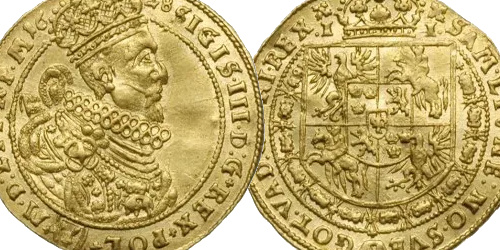A rare and treasured banknote design, the circulated version ranks among some of the rarest Polish banknotes of the last century.
A variant of the design designed for national cash registers.
Technically excellent and fresh with a characteristically checkered paper texture. Colors exquisitely preserved.
The banknote bears a PMG certificate with a PMG grade of 64.
Non-fresh corners. Minor superficial soiling in the margins, hence no EPQ.
A sought-after and eagerly included circulating banknote design, which is an excellent substitute for the unavailable unprinted version.
In 1924, pass tickets were introduced into circulation alongside Bank of Poland banknotes. Unlike paper money, the coins were issued for the account of the Treasury. As the amount of coinage accumulated in the treasury was insufficient, it was decided to issue pass tickets to temporarily replace coins. The paper money issued by the Treasury was to help exchange Polish marks for zlotys by providing the public with the lower denominations necessary for everyday transactions.
In the second half of the 1920s, the Treasury Ministry introduced a paper two-zloty and two types of five-zloty coins still in circulation. The issuance of perfunctory paper money was linked to the country's economic recession in 1924 and 1925. In 1927 the government introduced a stabilization plan. It was then decided to redeem the perfunctory tickets in circulation. This was done by exchanging them half for Bank of Poland bills and half for bullion money. From then on, only paper money of the Bank of Poland was in circulation.
In the second half of the 1920s, the first issues of domestically designed and printed banknotes - 10 zlotys 1926, 20 zlotys 1926 and 50 zlotys 1925 - were put into circulation. The separation in their graphic design of a white margin intended for a watermark permanently inscribed the appearance of Polish paper money used to this day.










